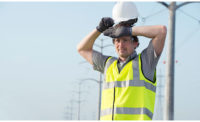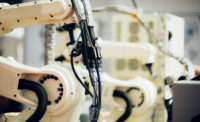Robotics bring increased safety to facilities

Machines have been at the center of industry for over a century, but today’s technology is making regular leaps and bounds toward the future. Advanced robotics are increasingly common in the workplace, bringing several benefits to job sites as well as new challenges.
Safety is a top priority for companies and facilities in every industry. Robotics can play a crucial role in workplace safety as technology grows in prevalence and capability.
How robots benefit the workplace
Technology is constantly developing, so the potential benefits for companies and workers are endless. Today’s robotics have brought myriad advantages to the workplace in recent years:
- Improved productivity: Machines are often faster and more efficient than human workers. Their automated functionality can increase productivity when completing daily tasks.
- Increased profits: Better productivity leads to better profits. Additionally, robotics provide an excellent return on investment (ROI). Investing in the right technology will pay off in the long run.
- Higher-quality products: Robotics are less prone to make errors than humans. That means fewer mistakes in production and better quality results for manufacturers.
- Sustainability: Improved efficiency reduces waste, an important part of more sustainable manufacturing.
- Multitasking capabilities: Robotics can juggle multiple tasks simultaneously, completing certain jobs faster and more accurately than people.
While these bonuses are worthwhile, safety is among the most essential benefits technology can offer on the job. Improved safety conditions promote health and happiness at work and help employees avoid accidents, injuries and other issues.
Robotics and improved safety on the job
In a recent survey, 94% of respondents said physical safety was a very important priority within the workplace. Robots can reinforce safety practices in several ways, from assisting employees with risky duties to handling complicated tasks entirely.
Moving products safely
Lifting and moving products is a common occurrence on the warehouse floor and one of the leading causes of workplace injuries. Work-related musculoskeletal disorders (WMSD) are major threats to worker safety.
Fortunately, facilities with robots can reduce these risks. Machines are stronger and less prone to injuries than humans. Autonomous mobile robots (AMRs) can complete tasks on their own, like lifting heavy loads and moving objects, without getting hurt. They can also detect the presence of people and vehicles so they can work safely among human workers.
Reaching new heights
Storing, organizing and retrieving products in manufacturing often involves tall shelves and other tasks performed at heights. Working at higher levels can be dangerous without the proper precautions — falls and dropped items can lead to severe injury.
Robotics help employees avoid these dangers by taking on heights so humans don’t have to. Forklifts, AMRs and other technologies can access products on high shelves and upper levels. Since the risks to robots are significantly less severe than dangers to humans, many facilities prefer to let machines handle tasks at elevation.
Preventing repetition injuries
Unlike people, robotics can’t get carpal tunnel syndrome or other repetitive strain injuries (RSIs). These common workplace problems can sideline workers and cause significant health and career complications.
That means robots can work longer and harder without risking injury. Even if parts wear out over time, they can easily be replaced so the machine works like new — unlike a human worker’s wrists and knees.
Avoiding fatigue
Employees require adequate breaks and time off. Without enough downtime to unwind, workers are at an increased risk of making mistakes that could result in productivity loss, quality mistakes and even injury.
AMRs and other advanced machines don’t experience fatigue. Since they don’t get drowsy on the job or are careless with risky tasks due to overwork, facility managers can rely on robotics to perform regularly and safely at all times.
Understanding the challenges of workplace robotics
Robotics brings numerous benefits to the workplace but also poses unique new challenges. Since this technology is new and ever-evolving, there aren’t many OSHA standards in place to manage the risks. People may not understand how the technology works, leading to incidents between employees and technology that cause injuries. New machines and tech might also expose workers to lasers, electromagnetic fields and automatic functions.
Combating these issues requires vigilance. Facilities should implement responsible guidelines and protocols to ensure people stay safe on the job when they’re working with or near robotics. For example, onboarding and regular employee training should include instructions onsafely engaging with all types of technology in the workplace.
Increased safety on the job with robotics
Technology is more advanced and common than ever. Its capabilities are growing in every industry, and more business leaders are eager to use new technology in facilities to improve productivity, profit margins and safety features.
Robotics on the warehouse floor give workers extra assistance to prevent common workplace injuries. They can work with greater peace of mind knowing they have the support of the most advanced tech around.
Looking for a reprint of this article?
From high-res PDFs to custom plaques, order your copy today!







